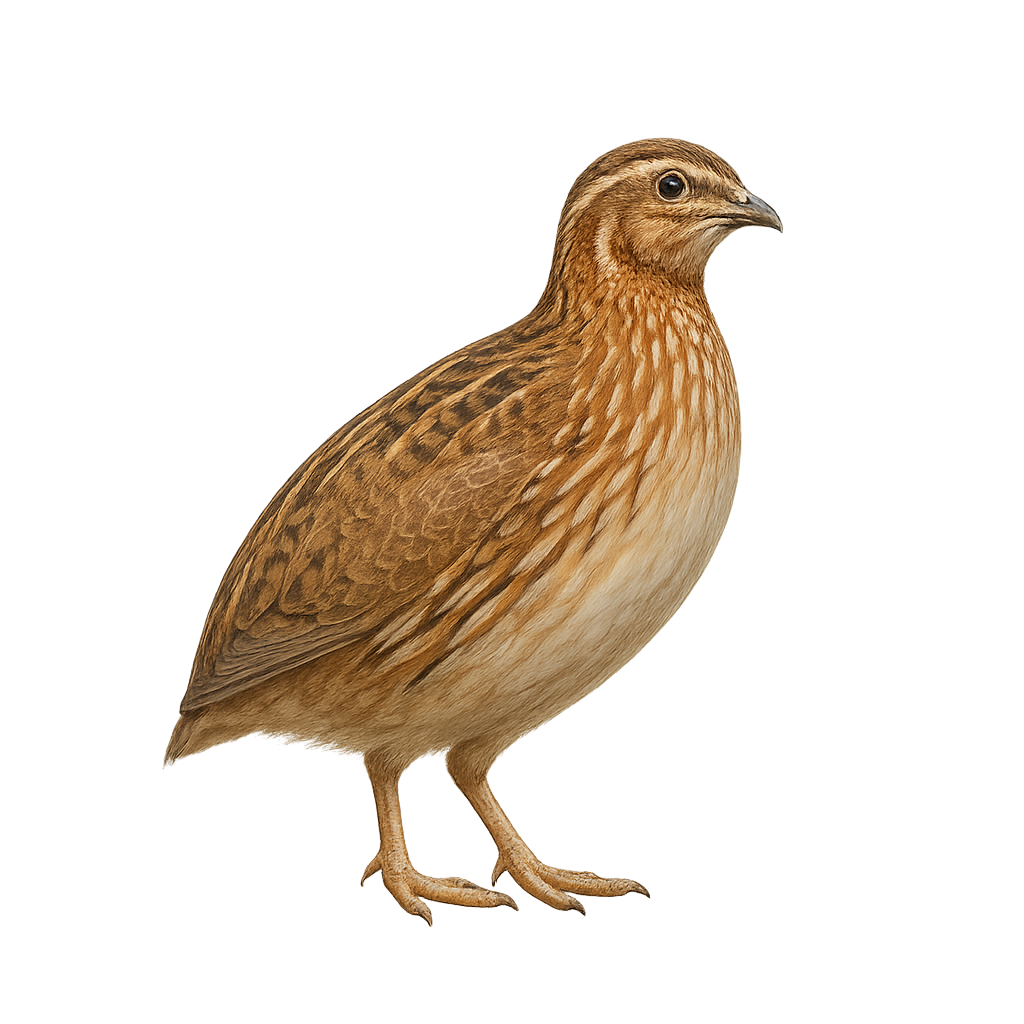Your wildlife photography guide.
Explore the quail in detail, study its behavior, prepare your shots.
Where to observe and photograph the quail in the wild
Learn where and when to spot the quail in the wild, how to identify the species based on distinctive features, and what natural environments it inhabits. The WildlifePhotographer app offers tailored photography tips that reflect the quail’s behavior, helping you capture better wildlife images. Explore the full species profile for key information including description, habitat, active periods, and approach techniques.
Quail
Scientific name: Coturnix coturnix

IUCN Status: Least Concern
Family: PHASIANIDAE
Group: Birds
Sensitivity to human approach: Suspicious
Minimum approach distance: 30 m
Courtship display: April to July
Incubation: 16-20 jours
Hatchings: April to August
Habitat:
Meadows and farmland
Activity period :
Primarily active during the day, with peak activity in the morning and late afternoon.
Identification and description:
The Common Quail is a small, ground-dwelling bird, easily recognizable by its striped brown plumage and small size. It primarily inhabits fields, meadows, and open agricultural areas, where it blends perfectly into the vegetation. This bird is mostly terrestrial, spending much of its time running through tall grasses rather than flying. When it does take flight, it is usually quick and short, a strategy to escape predators.
The Common Quail is migratory, leaving its breeding grounds in Europe and Asia to travel to Africa during the winter. Its population is declining in some areas due to habitat loss, intensified agriculture, and hunting. Despite these threats, conservation efforts have been implemented to stabilize local populations.
Recommended lens:
300 mm – adjust based on distance, desired framing (portrait or habitat), and approach conditions.
Photography tips:
Approach slowly and discreetly, using a telephoto lens to avoid disturbing the grey partridge, a small shy bird often hidden in fields or tall grasses.
Photograph early in the morning or late in the afternoon, when the light is soft and the grey partridge is more active, often feeding or moving quietly.
Capture moments of natural behavior: The grey partridge is often seen on the ground, searching for food. Wait for moments when it is more visible without disturbing its natural behavior.
Be patient and respectful: As a discreet bird, the grey partridge can easily be disturbed. Stay quiet and wait for a moment when it moves or rests in its natural environment.
The grey partridge is a vulnerable species due to habitat loss and intensive agricultural practices. It is essential to respect its natural environment, not disturb its feeding or nesting behaviors, and follow local conservation rules to preserve this species.
The WildlifePhotographer App is coming soon!
Be the first to explore the best nature spots, track rutting seasons, log your observations, and observe more wildlife.
Already 1 427 wildlife lovers subscribed worldwide

